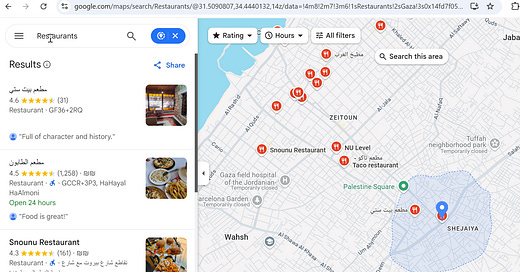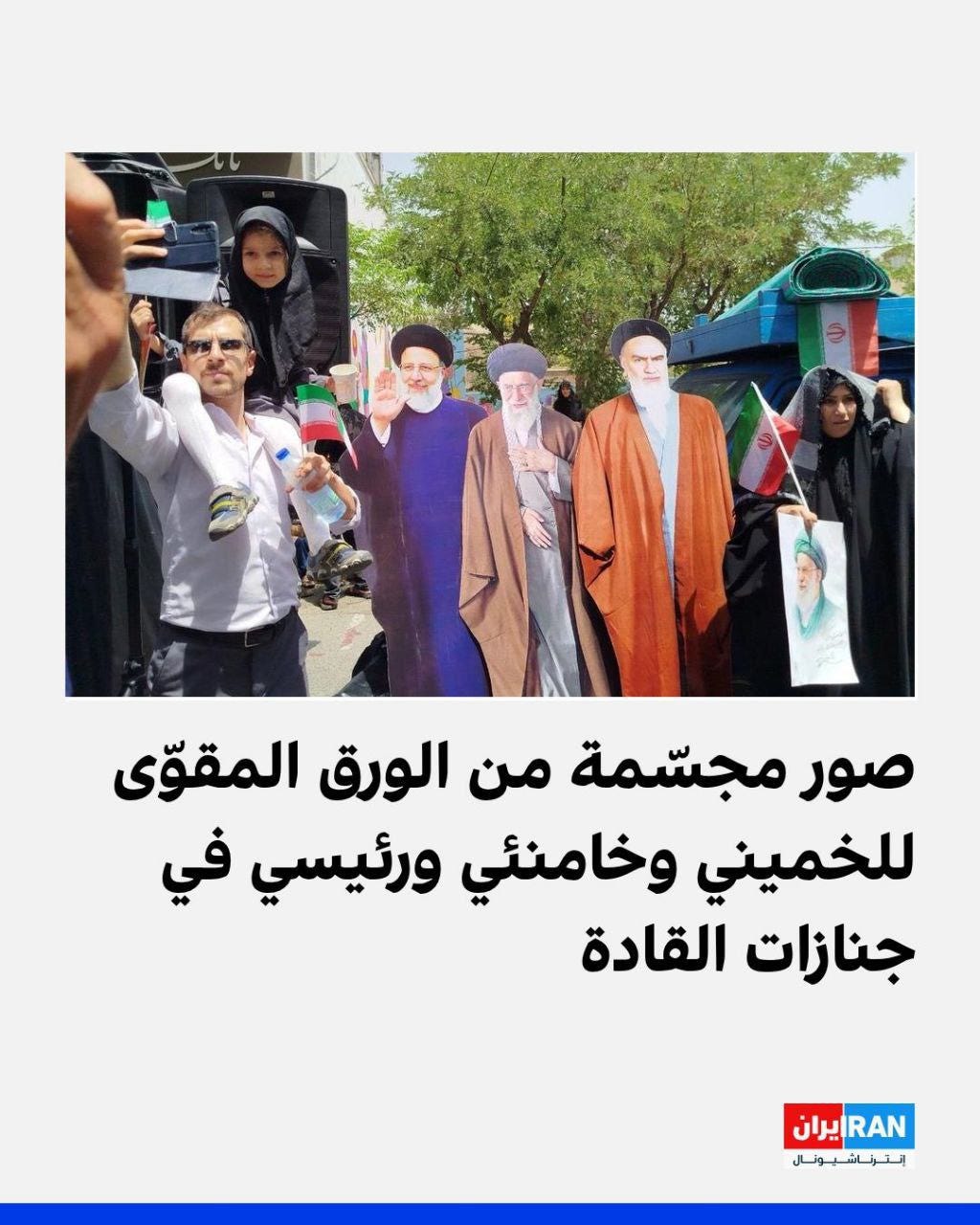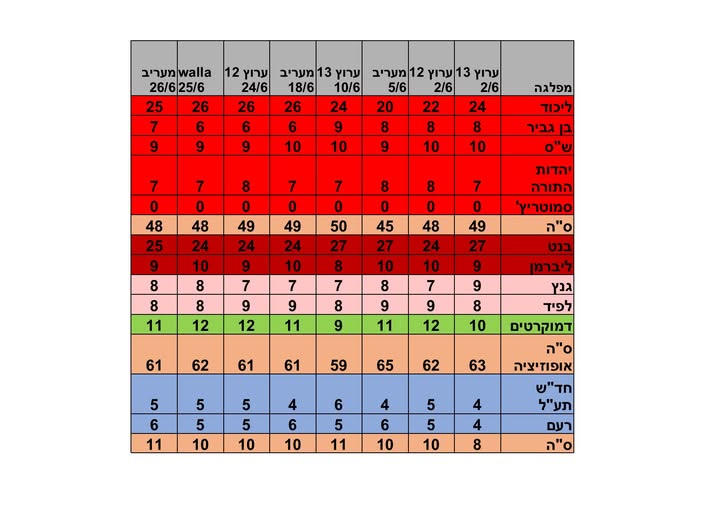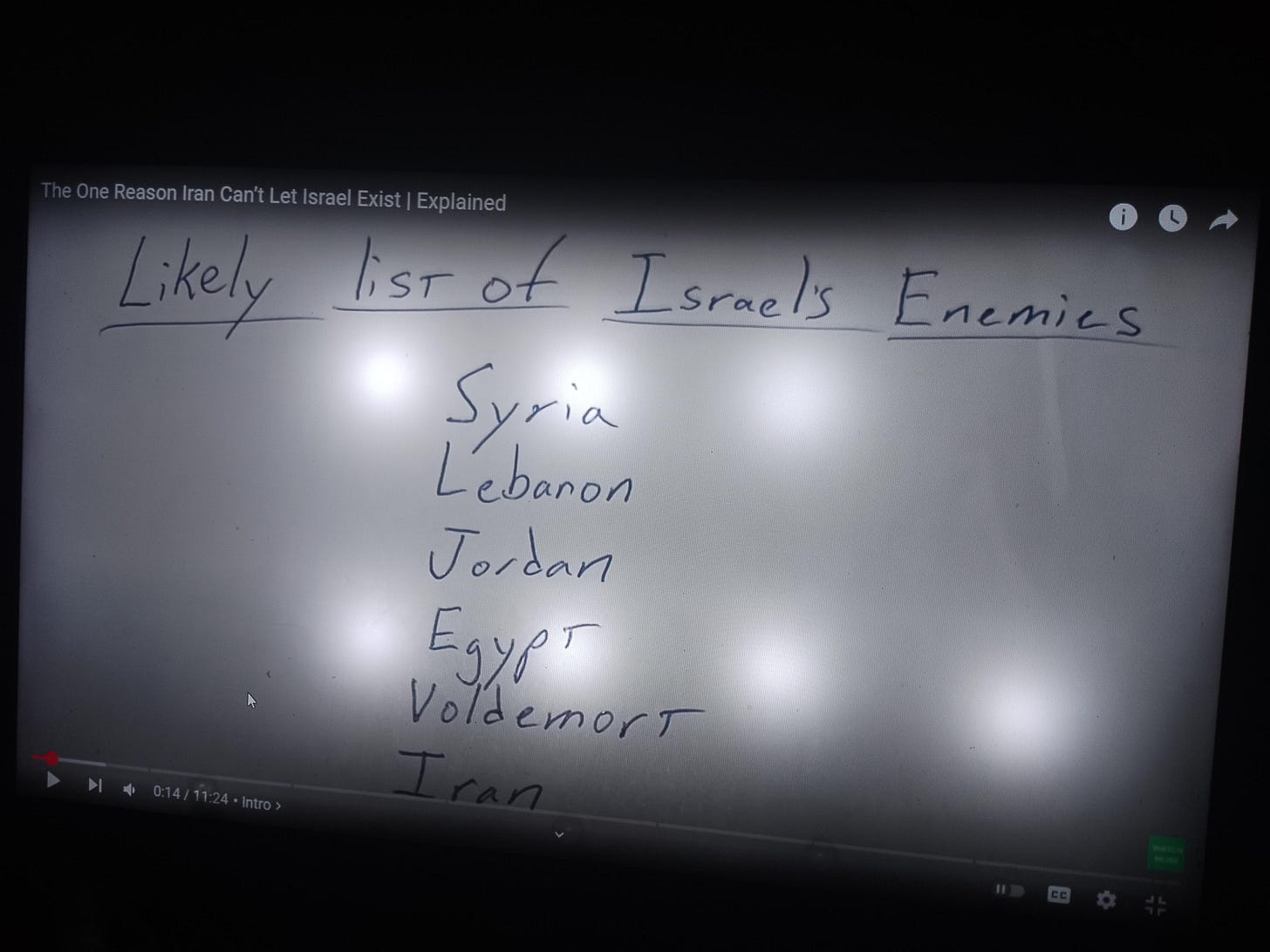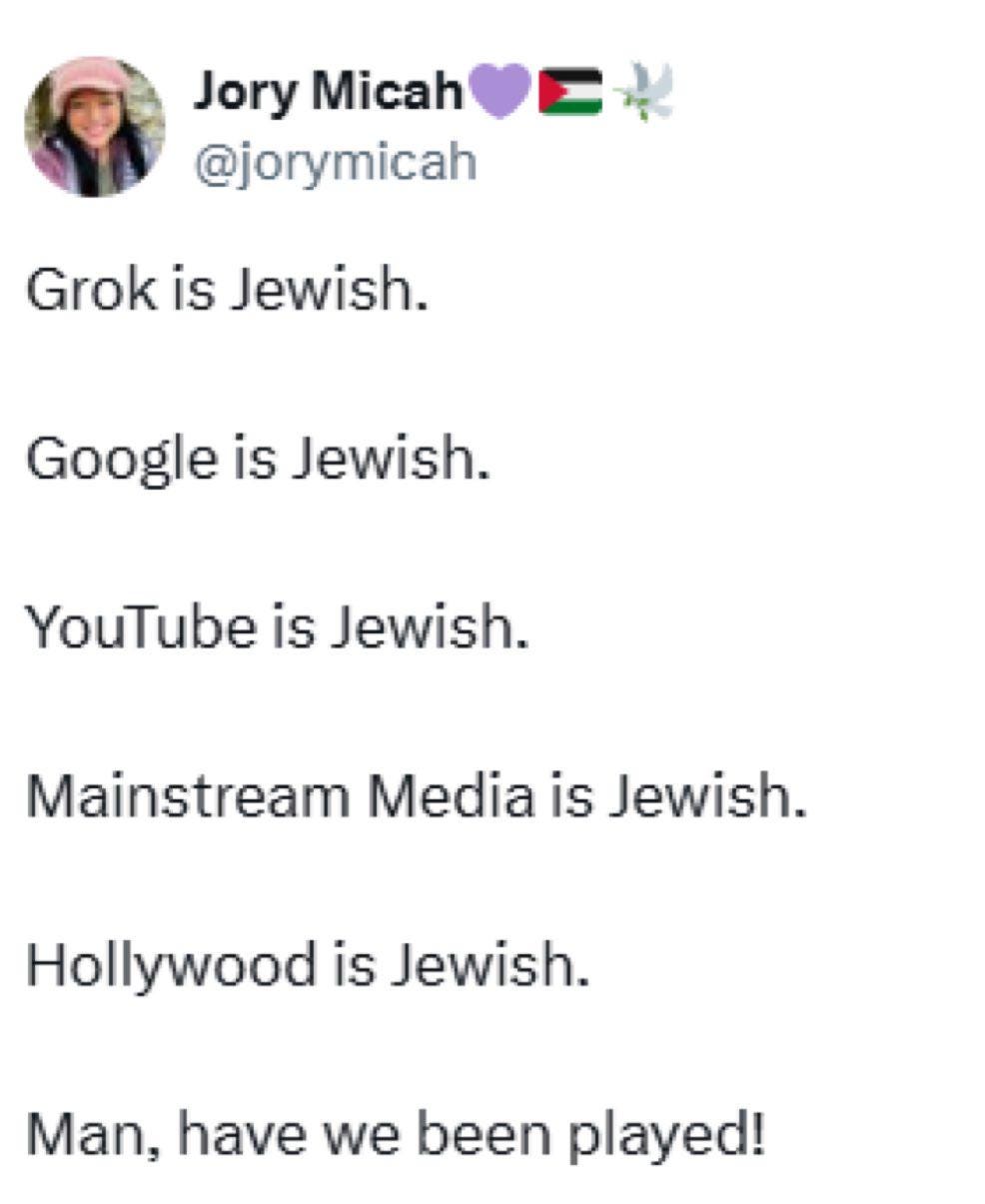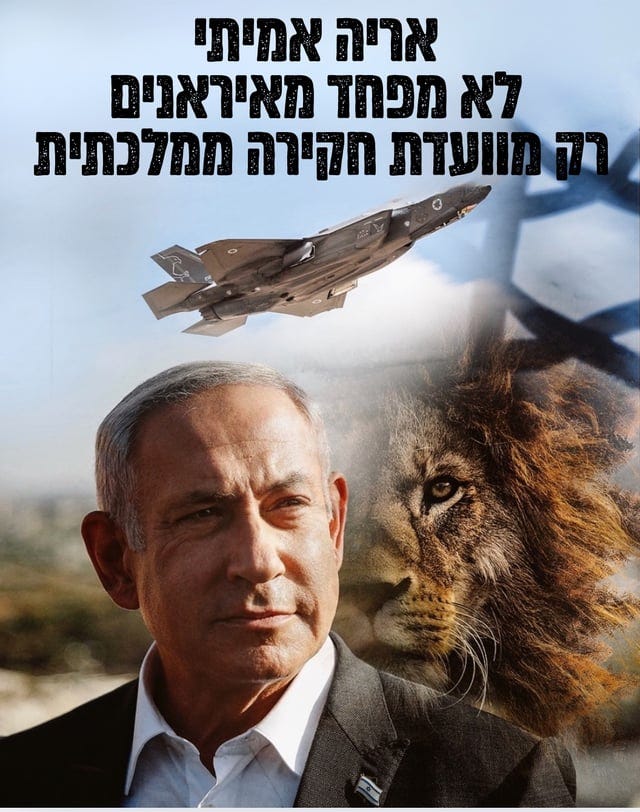First Time Here? Readers suggest starting with the expanded Gaza Explainer in #133 and #120.
Top Ten IsRafOK Entries: #85; #123; #128; #140; #144; #154; #161; #162; #164; #171
Tags: 12 Min Read; Gaza Food Security - Another Angle
Updates: The Aid Trucks section of #188 was updated on June 28.
When this substack hit 400 entries, I was going to post a milestone note. I see this entry will be #408. During the war I didn't notice such things.
Ah well.
Mail
Who keeps track of aid going into Gaza? Isn't that the U.N.'s job?
See the Aid Trucks section below.
The News Says Famine in Gaza, Come On!
Two things.
The source reports under those reports are worried about possible famine. They have not yet claimed that one actually happened. There are two million people in Gaza and a hot war. There is food insecurity. But the news headlines are not in sync with conditions on the ground (which includes massive stockpiling during ceasefires when trucks roll by the hundreds).
Outside the "food insecurity" lens, there is also food security. This... doesn't make the news.
Because our brains are not fucked up enough about Gaza, we can look to Social Media for... answers? If you exit the "Hamas-o-sphere" and Al Jazeera-verse on Instagram, there is ... the other side: Decent restaurants in Gaza. Open and serving food. And posting pictures to social media all the time.
Does famine include this? (This is not satire, and it is not AI. These are live businesses serving food.)
Cafe Estkana, Gaza - Al-Rimal neighborhood, posted a few weeks ago:
Happy Chocolate posted from a Gaza beach:
(Check out their active Facebook page.)
Ice Cream Hamada posted within the last couple of weeks:
Roma Restaraunt seems to have multiple locations open and an active Facebook page.
The above came from a video by a kind of rah rah Israel promoter. I wanted to do my own search to validate this idea. So, I asked Google Maps and searched for restaurants in Gaza City:
(Maybe I would get more hits searching for the word in Arabic, but this will get us started.)
The first hit had no links.
The second hit has a Facebook page, but says it is closed until the war is over.
The third hit has an active Facebook page which posted this on June 28, 2025:
The fourth hit was inactive for years.
The fifth hit last posted October 6, 2023.
And the sixth hit, open for business until March of 2025.
This entire search took ten minutes or so.
So the answer is... there are operating restaurants.
And the warehouses and private sector trade that support them.
I don’t think this is what famine looks like.
Know Thine Enemy
Part 1
From the speech of Hezbollah Secretary General Naim Qassem on the occasion of the beginning of the month of Muharram and Ashura:
When we win, we win, and when we die martyrs, we win.
Hamas and Iran and the Houthis in Yemen have exactly the same philosophy.
Part 2: Frederik Pleitgen on CNN
Dept of The Invisible
Items invisible in the Western media. (Now combined with the Postmark concept, to help consolidate topics by locale.)
Iran
Iranian opposition sources report that Iranian air defense systems were also activated in the Tehran province last night (this has happened almost every night since the ceasefire).
There is much footage of funerals of the generals killed at the beginning of the conflict. And this:
Iran's Supreme Leader "attended" a mass funeral in Tehran today in the form of a cardboard doll, along with Ruhollah Khomeini and former President Raisi, two of whom have already passed away.
What to make of this?
Attack on Evin Prison
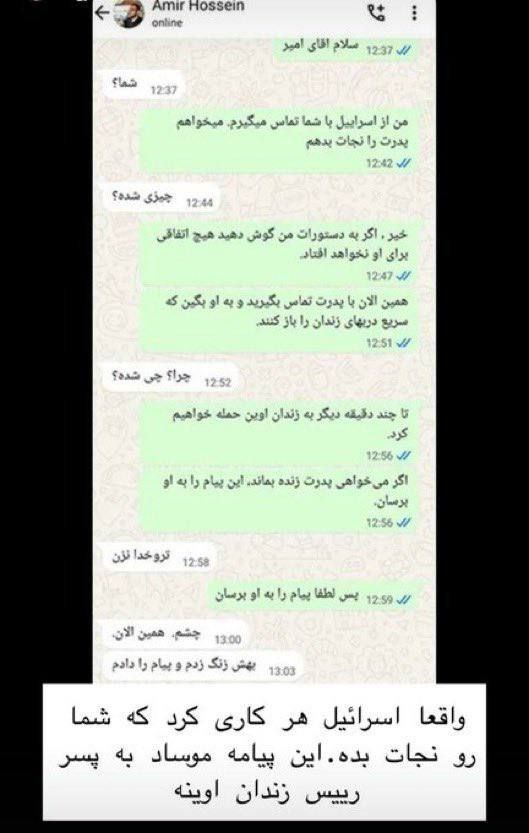
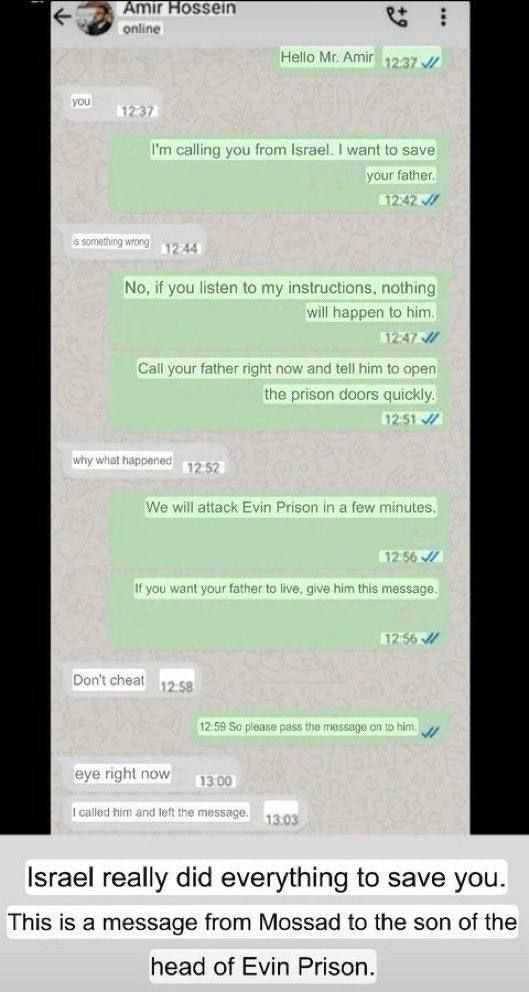
An apparently legitimate leak on social media: the Mossad contacted the son of the commander of Evin Prison in Tehran and warned him before the prison attack - as a result, the prison director and his brother fled minutes before the attack.
Assuming this is legit, who would leak this... the Mossad, the Commander's son, IRGC counterintelligence, or _____ ?
Take It To The Bank?
In terms of currency exchange rates, Israeli vs. Iranian, Israel won the 12-day war:
3.6 shekels to the dollar before the war in Iran.
3.37 shekels to the dollar, today, after the war in Iran.The shekel strengthened by about 6%.
820 thousand Iranian rials to the dollar before the war.
900 thousand rials to the dollar, today, after the war.The Iranian rial weakened by about 10%.
(I don't think this means much, but it's cute.)
Gaza
Social Media Post by a Gazan
حرب البسوس كانت عشان ناقة واستمرت ٤٠ سنة وحربنا هذه اللي عشان حمار .. قديش ممكن تستمر
Translation:
The Bassus War started because of a camel and lasted 40 years.
This war of ours (in Gaza) started because of a donkey.. How long will it last?
Context:
The Bassus War is a war that began in 494 AD (before Islam) in what is now Saudi Arabia between the Ta'alib tribe and the Bakr tribe. It lasted 40 years and claimed many victims.
It began as a war of revenge after a man from the Bakr tribe killed a camel that belonged to a woman named al-Bassus, the aunt of one of the leaders of the Ta'alib tribe.
The Al-Bassus War became an example in the Arab world of a long and unnecessary war over a trivial matter.
This post refers to Hamas as a donkey because those who have spoken out against Hamas on social media (several of whom appeared in earlier posts on this blog) have been killed by Hamas.
Death Toll
As mentioned earlier, the death toll is a mix of Hamas and civilian deaths. Part of the mix at this point is that the IDF is (and has been since the ceasefire) assassinating Hamas leaders when they are at home (it appears they have a practice to be either with hostages or with family members—part of Hamas’ military doctrine). As a result, family members are often killed.
It can be noted that the Hamas-run Gaza Health Ministry not only classifies the deaths of Hamas terrorists and leaders as civilian, but that a high percentage of the "youth" deaths are of males aged 16 and up--data late last year showed a big skew of youth deaths being male. A high percentage of these are Hamas members under 18.
Aid Trucks
I am doing a cycle on this topic.
Humanitarian aid into Gaza is a fraught topic, because smuggling efforts are fantastically creative and effective. It isn't just Hamas smuggling in weapons and military-use equipment (simple digital cameras are used by Hamas to trigger IEDs, for example). Criminal groups smuggle in drugs and weapons independent of Hamas. The "pressure" is enormous and makes the aid topic messy. (Heck, building materials were diverted by Hamas, for years, for tunnel building. How would you screen goods going into Gaza? [Recognizing that food, and construction materials, have every right to enter the Strip?])
The Israeli agency that manages supplies to Gaza (water, electricity, trucks of everything) is called COGAT. They publish data on a web site. The good news is that there is a lot of data. The bad news is that it is always 6-10 days trailing. As I write, on June 29, the data is as of June 23. Here it is, in tons:
21 tons for all of May, and 26 tons through June 23. June's data-to-the-23rd indicates a run rate of about 8 tons/week, so June could finish at 34 tons, which would be a 62% increase from May. To put this in context, during the hostage release ceasefire, massive amounts of aid entered, a large percentage of which was stockpiled. Given that restaurants and other parts of the Gaza food-economy thrive, those stockpiles are holding up.
Of the many complexities, and why COGAT seems to be the only "big picture" source of data, is that aid has many origins:
This is by way of saying that on the one hand it is easy to measure aid: COGAT has, and publishes, the complete picture. On the other, once the trucks cross into Gaza, there is no entity tracking the big picture. E.g. How much aid is distributed within a day or two; How much is warehoused; Who controls the trucks (once they are "occupied" by armed men), etc. [It reminds me of how homelessness is "managed" on the American West Coast... lots of agencies doing overlapping service... the same person may receive help from two or three or four agencies on a given day and every agency gets to count it as "helping a person"—and no agency is responsible for solving anything.]
GHF
In this mix is the Gaza Humanitarian Foundation (GHF - their website--their Facebook page seems more up to date). This entity, established in early 2025, has been the target of controversy: Is it funded by Israel? Is it political? Does it conform to humanitarian principles? (I confess that to my eyes handing out food is a humanitarian act, even in the wrong place or at a bad time.)
But before we get into the meat of my review, let us remember: The war in Gaza is, in the eyes of Hamas and Iran, a war on social media. A kind of information war. This is why you never heard of restaurants in Gaza. This is why the stink about GHF has been so huge: Hamas hates GHF. From June 30:
The Gaza Humanitarian Foundation has disclosed that Hamas had placed bounties on American security workers in the enclave and that 12 of the organization’s local staff members had been murdered in its latest update on the situation in Gaza.
“Hamas has placed bounties on both our American security personnel and Palestinian aid workers, offering cash rewards to anyone who injures or kills them,” the [June 29] GHF statement said.
The recent controversy: Because it has insufficient crowd management in place IDF soldiers report that they were ordered to use lethal force to control crowds, contravening IDF rules and contradicting statements by GHF leadership that there have been no lethal incidents at their distribution points.
(The IDF did an investigation and changed directives to troops on the ground.)
Before the incident of potentially illegal IDF orders (which seem to be in the field, not from HQ), the controversy around GHF had to do with a perception that it was a tool to force migration within the Strip. As far as I can tell, at the root of the screaming [will screaming ever stop?] is this critique: GHF is using food to [try to] impose a policy of where people should live within the Strip. (As opposed, I suppose, of bringing food wherever people happen to be.)
For example, three of the four GHF distribution points are in the Rafah-Khan Yunis area (secured by men loyal to Yasser Abu Shabab--e.g. outside areas controlled by Hamas). The fourth is south of Gaza City, along the Netzarim Corridor (central Gaza).
Raf's Current Observations:
When it comes to free-of-charge food aid, does Raf care who funds it?
The "old" aid framework still runs. The results? An example: On June 25, 70 trucks were looted in the Khan Yunis area.
GHF reports that most days they distribute one to two million meals (see below)
The bottlenecks for GHF distribution seem to include:
Number of distribution points (there are only four and not all operate every day)
Number of trucks that reach the distribution points each day (Raf can't tell if this is a supply limitation, distribution point staff limitation or gatekeeping at the Gaza border)
All sources agree that IDF troops are kept hundreds of meters away from distribution points
When the GHF first set up, there was extensive documentation of lethal force by Hamas members (dressed-as-civilians), driving people away from the distribution points.
There is evidence that some of GHF's funding comes from the U.S. State Department (available information does not tell me the percentage).
It has been documented, from a number of sources, that the GHF distribution sites are poorly laid out and basically "ask for trouble." It appears that professionals in the field were not consulted, and this has resulted in chaos at these sites.
FWIW, the IDF announced on June 30 that access to one or more GHF sites has been redesigned to increase order.
Recent GHF data:


Based on watching this for months (including mountains of footage from Gazan social media channels), here is my summary:
Gaza is not a monolith: Control: There are zones controlled by: Hamas; the IDF; Yasser Abu Shabab (in the south); and at it seems one or two other clans)
Gaza is not a monolith: Standard of Living: There are social and economic strata in Gaza. There are restaurants and also quiet, undisturbed areas.
Control of food aid is part of Hamas' operating principles: Hamas has been profiting by reselling food aid for many years. As Hamas has controlled and taxed other aspects of life in Gaza, food aid is part of the picture.
No hungry region on the planet receives a fraction of the "mind share" Gaza receives. This mind share translates into donated money, supplies, and organizations. There has been a healthy degree of chaos in this domain for years, with overlapping organizations, relatively little coordination, and ongoing subservience to Hamas. What is going on today, from a big picture, is chaos-flavor-of-the-month.
There has not been, nor is there expected to be, a famine in Gaza.
Hamas military doctrine, which includes control of the food supply and hijacking aid, is not subject to international criticism.
Tunnels
June 27, IDF announces: Another 1 km tunnel destroyed, Beit Hanoun area, northern Gaza Strip
June 30: The IDF announced the mapping and destruction of a Hamas tunnel in the Khan Younis area which extended under the Ma'an school. It was two kilometers long and about 20 meters deep, and was used by Hamas for military purposes and extended stays.
Israel
June 27 statement by the IDF Spokesperson on the Iran war.
6 min, large English subs by Raf.
An article from The Times: "Israeli spies ‘in Iran for years’ before war on nuclear sites"
Latest Israeli Political Polls
This shows polls by various TV stations and newspapers from early June and late June (after the Iran war). They all indicate that the current opposition would win a majority. (Source: Social media, not verified.)
Stories That Give Me Hope, from the Bronfman Community
Yair Agmon (Amitai Bronfman '04) lives in Tel Aviv and is originally from Jerusalem. He is a filmmaker, author, and newspaper columnist, and is married with three children.
It was supposed to be a quick trip—a half-hour lecture at the ambassador's residence, and a couple of days for fun. Three nights total. But then the war broke out. Again. Flights were canceled instantly. The country became a war zone. Millions ran to shelters. Hundreds of thousands of Israelis were stranded abroad—including us: Dana, Yadin, and me. Three stunned Israelis in London.
At first, we joked. It'll pass. The skies will reopen. Someone will sort it out and tell us when we can go home to our kids. But we quickly realized: there is no someone. This government is a hollow shell. Sure, Israel has military jets that refuel midair, but for us citizens? There’s no one there.
We have no connections, no strings to pull. Just uncertainty and helplessness. So we sit in London, glued to the news, following every siren. We FaceTime our kids, who don't understand why we're not coming back. From our frightened, Jewish perspective, London feels hostile. Our hotel sits next to the city's big mosque. Walking past it, we swallow hard, say nothing. The grocery beside us is run by three Iranians. They have gentle eyes and kind hearts.
People are generally nice—until, inevitably, they ask where we're from. "We're from Israel," we say. Then comes the silence. The flicker in the eyes. The awkward smile. The stuttering goodbye.
The days go by. Eventually we debate flying back through Egypt: Land in Sharm el-Sheikh, then taxi across Sinai to the Taba crossing. We trust the Bedouins. A friend there, Makboul, has hosted us for years. I call him. It's safe, he says. He'll pick us up. We can't bear the distance anymore. So we buy tickets—London to Sharm—and hope for the best.
On our last night in London, we go to a pub. We drink, laugh, cry. We go outside to smoke. I'm happy—we're finally going home—and I sing a little. Two women nearby hear me and laugh. We start chatting. They're nice, but we know what's coming. A few seconds later, one of them asks: "Where are you from?" We pause. "Israel." And brace for the bitter look. But instead—they smile. "We're from Ukraine!" they laugh. We all start laughing, but it’s a sad laugh. "You're the only ones who get us!" we say. "You're doing great!" they reply. "Our families don't even have bomb shelters. In Kyiv, there's a curfew every night. What are you whining about?"
Their names are Marta and Lizzy. Before we go our separate ways, they bless us: May you return safely to your kids. May you find peace and calm.
The flight to Egypt is smooth. On board, we meet young Arab Israelis who'd been stuck in Greece, also heading home via Egypt. They're funny, warm. One sees we're anxious and grins: "Don't worry. We'll protect you." He's joking, but it reassures me.
We land at night. Mohammad, the kind Bedouin driver who works with Makboul, waits outside. The drive is scary but passes quickly. At the Taba border, a weight lifts. Soon we'll cross into Eilat, then head north. To my children. At 1 am, we step across—relieved, elated—onto the Israeli side. The air is hot, dry, exhilarating. I drop to my knees, kiss the filthy pavement, and say shehecheyanu [שהחיינו]: Blessed are You... who has granted us life, sustained us, and enabled us to reach this moment.
Relief Area
Alef: Really?
The fuck did Voldemort do to be on the list??
Bet: This Also Happened...
A couple of Belz Hassidim dressed up as Muslims and came to Israel via Egypt.
(True? Eh, I give it 50-50)
Gimmel: When You're in love the whole world is Jewish
Dalet
Hey
Vav
Zayin
Chet
Tet
A real lion is not afraid of Iranians, just state commissions of inquiry...
“A real lion”—play on עם כלביא the name of Iran war.
It is nice to be back in Tel Aviv. Directions to public shelters are everywhere. But the city never sleeps.
To Peace,
Raf
(Thank you A.K., M.T., R.G.)
